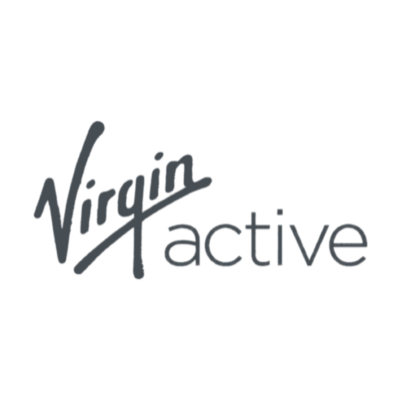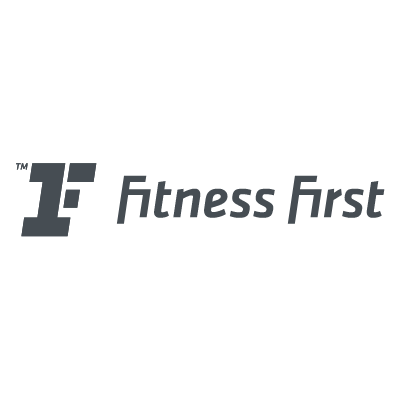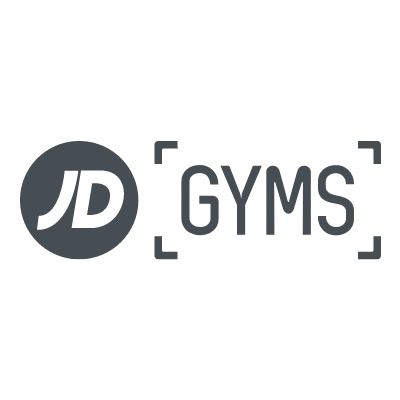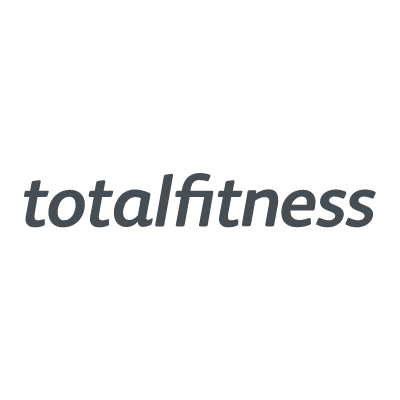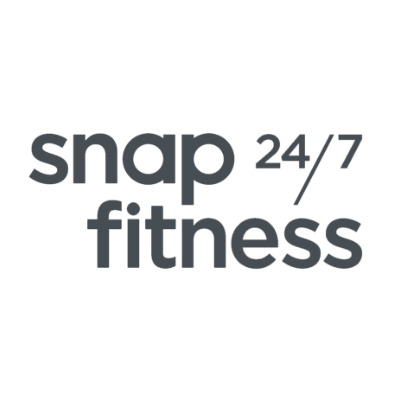How to Become a Successful Mobile Trainer

Do you want to know the exact steps to take to set up a successful mobile personal training business?
You might already know the benefits of becoming a mobile personal trainer.
And maybe you’re looking to step away from the gym floor...
Whether that’s to cut down on your costs and overheads, gain more flexibility and work-life balance, or just enjoy the freedom of training outside the four walls of the weights room.
But where do you start setting up your mobile PT business? What strategies are tried and tested to be successful? And what do you need to know before you take the plunge?
To build a solid foundation before going mobile, many trainers choose to complete an online personal trainer course to boost their skills and confidence.
This article gives you a step-by-step guide to starting your mobile personal training service, winning clients, and making it a success.
It walks you through the process of defining your target audience, getting registered and legally compliant, choosing the right marketing tactics to win new clients, and getting on top of the logistics of client management.
By the end of the article, you’ll have a complete roadmap to ‘go mobile’ and enjoy the freedom and flexibility of running your own mobile PT business...
Summary: Key Points for Mobile Personal Training Success
-
Understand the Mobile PT Business Basics:
- Benefits of becoming a mobile personal trainer.
- Steps to setting up a successful mobile training service.
-
Define Your Niche and Target Audience:
- Identify the specific client demographic you’ll serve.
- Tailor your services to address their unique needs and goals.
-
Create a Comprehensive Business Plan:
- Set SMART goals for growth and client acquisition.
- Budget for startup costs, ongoing expenses, and income projections.
-
Obtain Certifications and Insurance:
- Get accredited by recognised fitness organisations.
- Secure liability and public insurance for protection.
-
Register and Legalise Your Business:
- Choose the best structure for your business (sole trader, partnership, or limited company).
- Adhere to local regulations and licensing requirements.
-
Develop a Strong Brand and Online Presence:
- Craft a compelling unique selling proposition (USP).
- Build a professional website and engage on social media.
-
Market Your Services Effectively:
- Use platforms like Instagram, Facebook, and YouTube to reach new clients.
- Showcase client testimonials and success stories.
-
Master Client Logistics:
- Use scheduling apps to manage appointments and reduce travel time.
- Plan routes efficiently to maximise your time.
-
Tailor Programs to Individual Clients:
- Conduct initial assessments and set realistic fitness goals.
- Offer personalised training plans that adapt to client progress.
-
Maintain Professionalism and Quality Service:
- Invest in reliable equipment and keep it well-maintained.
- Build strong relationships through excellent communication and support.
Setting up your mobile personal training business
Becoming a mobile personal trainer is an exciting and lucrative opportunity, but like any business, it requires careful planning and strategic thinking. Let’s dive into the steps you need to take...
Creating a business plan for your mobile personal training business
Defining your niche and target audience
The first step in creating a solid business plan is to define your niche and target audience. This will help you stand out in a crowded market and attract the right clients. Are you passionate about working with older adults, helping them maintain mobility and strength? Or perhaps you prefer training young athletes aiming to enhance their performance? Identifying your specific area of expertise will not only make marketing easier but will also establish you as an authority in that field.
Research your potential clients' demographics, interests, and pain points. Understanding your audience deeply will allow you to tailor your services (and your message) to meet their needs precisely. For example, if you target busy professionals, offering early morning or late evening sessions could be a key selling point.
Jo Green’s Insight:
“Finding your niche isn’t just about your interests—it’s about identifying gaps in the market. For instance, there’s a growing demand for trainers specializing in pre- and postnatal fitness. Positioning yourself as an expert in a niche can make all the difference in a competitive industry.”
Setting clear goals and objectives
Without clear goals, your business can quickly lose direction. Set both short-term and long-term objectives to keep your growth on track. Short-term goals might include securing your first five clients within the first three months or achieving a certain revenue target. Long-term goals could be expanding your service area, hiring additional trainers, or launching an online training component.
Use the SMART criteria (Specific, Measurable, Achievable, Relevant, Time-bound) to formulate your goals. For instance, instead of saying, "I want more clients," a SMART goal would be, "I aim to gain 10 new clients within the next six months by increasing my social media marketing efforts."
Jo Green’s Insight:
“Goals give you focus, but tracking progress keeps you accountable. I always advise trainers to review their goals quarterly—what’s working, what isn’t, and where you can double down on opportunities.”
Financial planning and budgeting
A robust financial plan is crucial to make your mobile personal training business successful and sustainable. Start by outlining your initial startup costs. These might include a reliable vehicle, fitness equipment, insurance, certification renewals, marketing materials, and a website.
Next, project your monthly expenses such as fuel, vehicle maintenance, equipment upkeep, and any subscription services like scheduling software. On the income side, estimate your potential earnings based on your pricing structure and client capacity. Ensure your pricing reflects the value you provide and aligns with your target market’s willingness to pay.
Create a budget that balances your expected income and expenses, leaving room for savings and unexpected costs. Regularly review and adjust your budget as your business grows and evolves.
Legal and administrative essentials
Obtaining necessary certifications and insurance
Before you even start training clients, ensure you have the right certifications in place. You want to be seen as a professional so getting the proper accreditation is important to build trust in the eyes of any prospective clients. Look for certifications from recognised bodies such as the National Academy of Sports Medicine (NASM), the American Council on Exercise (ACE), or the UK’s Register of Exercise Professionals (REPs).
Beyond basic certifications, consider specialising further based on your niche. For example, certifications in senior fitness, sports conditioning, or nutrition can set you apart from other trainers.
Insurance is another critical aspect. Professional liability insurance protects you in case a client gets injured during a session and decides to sue. Public liability insurance covers you if a third party gets injured or their property is damaged due to your business activities. Some insurance providers offer packages tailored specifically for personal trainers, so shop around for the best coverage.
Jo Green’s Insight:
“Specialised certifications are your ticket to higher earning potential. The more unique your skill set, the more value you bring to clients. Insurance, on the other hand, isn’t just a formality—it’s peace of mind for both you and your clients.”
Registering your new business
Registering your business is an essential step to establish your credibility and ensure you’re operating legally. Choose a business structure that suits your needs – you can register as a sole trader, partnership, or limited company. Each structure has different legal and tax implications.
For sole traders, registration is relatively straightforward, but you’ll be personally liable for any business debts. Partnerships share responsibility between partners, while a limited company offers more protection for you as it’s a separate legal entity.
Register your business name with the relevant local authorities and ensure it’s unique to avoid any legal issues. In the UK, you can register with HM Revenue and Customs (HMRC) if you’re a sole trader or set up a limited company through Companies House.
Understanding local regulations and requirements
Every region has its own set of regulations governing personal training businesses. Familiarise yourself with these to avoid any legal pitfalls. For instance, some areas may require you to have a specific business license or permit to operate as a mobile trainer.
Check local health and safety regulations, especially if you’re training clients in public spaces. Some councils require permits for commercial activities in parks or other public areas. Ensure you’re compliant to avoid fines or other penalties.
It’s also wise to stay informed about any updates to laws and regulations that may affect your business. Joining professional organisations or networks can provide valuable resources and support in this regard.
Building your brand and marketing strategies
Crafting your unique selling proposition (USP)
Your unique selling proposition (USP) is what sets you apart from other trainers. It’s the unique benefit or value you offer that makes clients choose you over the competition. To craft a compelling USP, consider your strengths, expertise, and what you’re passionate about.
Think about the specific problems you solve for your clients. Are you a specialist in post-rehabilitation training, helping clients recover from injuries? Or perhaps you excel in high-intensity interval training (HIIT) for busy professionals? Your USP should reflect what makes your services unique and why clients will benefit from training with you.
Jo Green’s Insight:
“A clear USP turns you from ‘just another trainer’ into a must-have coach. Think of it as your fitness superpower—what’s the one thing you can do better than anyone else?”
Creating an engaging online presence
In today’s digital age, having an engaging online presence is crucial. Start with a professional website that showcases your services, qualifications, testimonials, and contact information. Your website should be easy to navigate, visually appealing, and mobile-friendly.
Blogging can also be a powerful tool. By regularly posting articles on fitness tips, client success stories, and industry trends, you can establish yourself as an authority in your field and improve your website’s search engine rankings.
Social media platforms like Instagram, Facebook, and LinkedIn are invaluable for reaching a wider audience too. Post regularly and engage with your followers by responding to comments and messages. Share a mix of content, including workout videos, client testimonials, behind-the-scenes glimpses of your training sessions, and educational posts.
Consider creating a content calendar to plan your posts and ensure consistency. Utilise features like Instagram Stories and Facebook Live to provide real-time updates and engage with your audience in a more personal way.
Effective marketing tactics
Utilising social media platforms
Social media is a powerful tool for reaching a broad audience and engaging with potential clients. Here’s how to make the most of it:
- Instagram: Use Instagram to showcase your training sessions, share fitness tips, and post client success stories. Instagram Stories are great for behind-the-scenes content and longer videos, respectively. Engage with your followers by responding to comments and messages promptly.
- Facebook: Create a Facebook business page where you can post updates, share articles, and create events for any workshops or group sessions you offer. Facebook Ads can also be a cost-effective way to target specific demographics.
- LinkedIn: For a more professional audience, LinkedIn is ideal. Share articles, post about your achievements, and connect with other professionals in the fitness industry. LinkedIn is also a great platform for B2B networking, which can lead to corporate wellness opportunities.
- YouTube: Consider starting a YouTube channel to post workout tutorials, fitness tips, and motivational content. Video content can significantly boost your visibility and establish you as an authority in your niche.
Jo Green’s Insight:
“Social media isn’t just for showing off; it’s a conversation starter. Use it to educate, inspire, and connect with your audience, and the clients will follow.”
Leveraging client testimonials and reviews
Client testimonials and reviews are powerful marketing tools that build trust and credibility...and show off the benefits you deliver for real clients. Encourage satisfied clients to leave reviews on your Google My Business page, Facebook, and other relevant platforms.
- Collecting testimonials: Ask clients for testimonials at the end of a successful training program or when they achieve a significant milestone. Make it easy for them by providing a simple form or guiding them on what to write.
- Showcasing reviews: Feature these testimonials prominently on your website and social media channels. Video testimonials can be particularly impactful, as they add a personal touch and authenticity.
- Responding to reviews: Always respond to reviews, whether they are positive or negative. Thank clients for positive feedback and address any concerns raised in negative reviews professionally and constructively. This shows that you value client feedback and are committed to continuous improvement.
Networking and partnering with local businesses
Building relationships with local businesses can expand your reach and open new opportunities. Here’s how to leverage local partnerships:
- Gyms and fitness centres: Partner with local gyms to offer your mobile training services to their members. This can be a win-win situation where you get access to a larger client base, and the gym can offer additional services to its members.
- Health and wellness businesses: Collaborate with nutritionists, physiotherapists, and massage therapists to offer comprehensive wellness packages. Cross-referrals can benefit all parties involved and provide clients with a holistic approach to their health.
- Corporate partnerships: Approach local businesses to offer corporate wellness programs. These can include on-site fitness sessions, wellness workshops, and health challenges. Corporate clients often provide a steady and lucrative source of income.
- Community events: Participate in local health fairs, charity runs, and community events to increase your visibility. Offering free workshops or mini-training sessions can attract potential clients and allow them to experience your expertise firsthand.
Mastering logistics and client management
Efficient scheduling and time management
Using scheduling software and apps
Investing in reliable scheduling software can save you time and help you stay organised. Apps like Acuity Scheduling, Mindbody, or Trainerize offer features tailored to personal trainers, such as:
- Automated bookings: Allow clients to book sessions online based on your availability, reducing the back-and-forth of scheduling.
- Reminders and notifications: Automatically send reminders to clients about their upcoming sessions, reducing no-shows.
- Client management: Keep track of client information, progress, and preferences in one place.
Jo Green’s Insight:
“A smooth scheduling system doesn’t just save time—it sends a message to your clients that you’re professional, organised, and value their time.”
Planning your routes and travel time
As a mobile personal trainer, travel time can quickly add up and eat into your day. Planning your routes carefully is essential to maximise your time with clients and minimise time spent on the road.
- Group clients geographically: Schedule clients in the same area back-to-back to reduce travel time between sessions. This not only saves you time but also reduces fuel costs.
- Use route planning apps: Apps like Google Maps or Waze can help you find the most efficient routes and avoid traffic. Some scheduling apps also integrate with map services to provide optimal travel planning.
- Factor in buffer time: Allow for a buffer time between sessions to account for any unexpected delays. This ensures you’re not rushed and can provide each client with the attention they deserve.
Balancing multiple clients and locations
- Set boundaries: Clearly communicate your working hours and available time slots to clients. This helps manage their expectations and ensures you have a balanced schedule.
- Offer virtual sessions: For clients who are farther away or have unpredictable schedules, consider offering virtual training sessions. This can supplement in-person training and provide flexibility for both you and your clients.
- Maintain a waiting list: Keep a waiting list for clients who want specific time slots. If a cancellation occurs, you can quickly fill the slot with someone from your waiting list, maximising your time and income.
Jo Green’s Insight:
“Offering virtual sessions not only saves time but opens up your services to a wider audience. It’s a smart move for trainers looking to diversify and future-proof their business.”
Ensuring quality and consistency
Maintaining high standards in your training services is key to client satisfaction and retention...especially as a mobile personal trainer. Quality and consistency in your service are what will encourage clients to stick with you for the long term.
Creating customised training programs
Each client has unique goals, fitness levels, and preferences. Creating customised training programs tailored to individual needs is essential for effective results and client satisfaction.
- Initial assessments: Just like you would do if you worked in a gym, ensure you conduct thorough assessments during the initial consultation to understand each client’s fitness level, medical history, and goals. Use this information to design a personalised training plan.
- Progress tracking: Regularly monitor and document your clients’ progress. Adjust their programs as needed to keep them challenged and motivated. Use tools like fitness apps or spreadsheets to track metrics such as weight, body measurements, and performance improvements.
- Variety and adaptation: Keep the training programs varied to prevent monotony and address different aspects of fitness. Adapt exercises based on the client’s progress and any feedback they provide to ensure the program remains effective and engaging.
Maintaining equipment and supplies
As a mobile personal trainer, your equipment is crucial to delivering quality sessions. Keeping your gear in top condition and well-organised is vital for professionalism and efficiency.
- Regular maintenance: Inspect your equipment regularly for wear and tear. Clean and sanitise items like mats, weights, and resistance bands to maintain hygiene and extend their lifespan.
- Essential kit: Carry a well-stocked kit that includes versatile equipment such as resistance bands, dumbbells, a yoga mat, and a portable bench. This ensures you can provide a comprehensive workout regardless of the location.
- Backup supplies: Have backup supplies on hand, such as extra resistance bands or a spare mat. This prepares you for any unexpected issues and ensures your sessions run smoothly without interruptions.
Jo Green’s Insight:
“Invest in quality equipment that’s portable yet durable. It not only enhances the client experience but also reflects your professionalism.”
Delivering exceptional customer service
Providing exceptional customer service sets you apart and fosters strong client relationships. Happy clients are more likely to stay with you long-term and refer others to your services.
- Personal connection: Build rapport with your clients by showing genuine interest in their lives and goals. Remember important details about their preferences and progress, and celebrate their achievements.
- Communication: Keep open lines of communication. Be responsive to messages and provide clear information about schedules, changes, and expectations. Regularly solicit feedback and act on it to improve your services.
- Professionalism: Always arrive on time, dressed appropriately, and ready to train. Respect your clients’ time and maintain a positive, encouraging attitude. Your professionalism reflects your commitment to their success and satisfaction.
Jo Green’s Insight:
“Great customer service isn’t just about being polite; it’s about understanding your clients’ needs and consistently exceeding their expectations.”
Considering setting up your own mobile PT business?
If you’re considering setting up your own mobile personal training business but still need the certifications to do so, now is the time to act. THFI offers a range of courses tailored to help you gain the qualifications and confidence needed to succeed in this exciting field.
From certifications in strength and conditioning to advanced personal training courses, THFI equips you with the knowledge and practical skills to stand out in the competitive fitness industry.

















